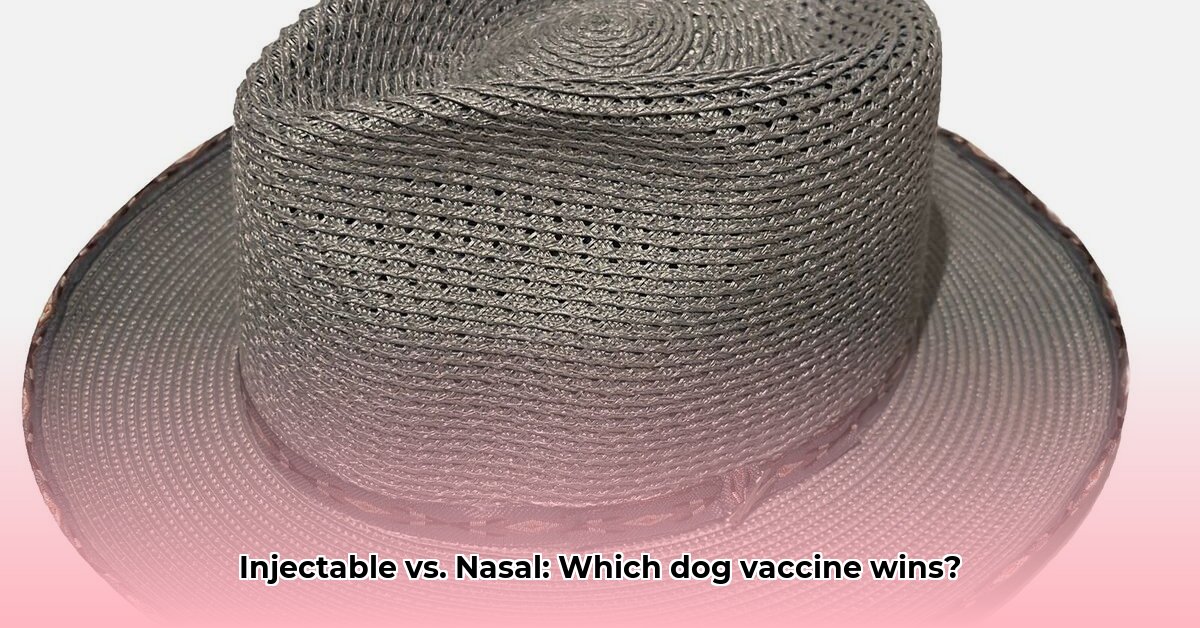
Kennel cough, a highly contagious respiratory infection in dogs primarily caused by Bordetella bronchiseptica, is a significant concern for pet owners and veterinarians alike. Effective vaccination is crucial in preventing its spread and mitigating its potentially serious consequences. Zoetis's Vanguard B vaccine offers two distinct administration methods: injectable and intranasal. This guide clarifies the key differences to help you make an informed decision regarding the best vaccination approach for your canine companion.
Understanding Bordetella bronchiseptica in Dogs
Bordetella bronchiseptica, a bacterium, is a leading cause of kennel cough. Symptoms can range from a mild, dry cough to more severe respiratory distress, including sneezing, nasal discharge, and even pneumonia in vulnerable dogs. The severity can vary greatly depending on the dog's overall health and immune system. Left untreated, kennel cough may lead to secondary infections, compounding health risks. Therefore, preventive vaccination is highly recommended, especially for dogs at high risk of exposure, such as those attending dog parks, daycare, or boarding facilities.
Vanguard B: Injectable vs. Intranasal – A Side-by-Side Comparison
Both injectable and intranasal Vanguard B vaccines target Bordetella bronchiseptica, but their administration methods and potential benefits vary. The following table highlights their key differences:
| Feature | Injectable Vanguard B | Intranasal Vanguard B |
|---|---|---|
| Minimum Age | 8 weeks | 3 weeks |
| Administration | Injection (subcutaneous) by veterinarian | Nasal spray (owner or veterinarian) |
| Advantages | Potentially longer-lasting immunity; established efficacy data | Convenient, less stressful for the dog; faster onset of immunity |
| Disadvantages | Requires a veterinary visit; potential for localized injection site reactions | Shorter duration of immunity; less extensive long-term data available |
| Cost | Varies by veterinary clinic | Varies by veterinary clinic |
Administration Procedures
Injectable Vanguard B: This vaccine requires administration by a qualified veterinarian.
- Site Preparation: The injection site (typically the subcutaneous tissue) is cleaned with an antiseptic solution.
- Vaccine Draw: The appropriate dose of Vanguard B is drawn into a sterile syringe.
- Injection: The veterinarian carefully injects the vaccine under the dog's skin.
- Post-Injection Monitoring: Brief observation for any immediate reactions is standard practice.
Intranasal Vanguard B: This can be administered by either a veterinarian or, in some cases, the owner (always follow your veterinarian's instructions).
- Restraint: Gently restrain your dog to ensure safe application.
- Spray Administration: Gently administer the prescribed amount into each nostril, avoiding contact with the eyes.
- Post-Administration: Monitor your dog for any unusual signs.
Addressing Common Concerns
Potential Side Effects: Both vaccines are generally well-tolerated. However, mild, temporary side effects can occur. Injectable vaccines might cause mild soreness at the injection site, while the intranasal version might lead to brief sneezing or a slight nasal discharge. Serious adverse reactions are rare. Contact your veterinarian immediately if you observe any concerning symptoms such as excessive lethargy, swelling, difficulty breathing, or persistent vomiting.
Vaccine Efficacy: While both vaccines provide protection against Bordetella bronchiseptica, the duration of immunity may differ. Ongoing research continues to refine our understanding of long-term efficacy for both forms. Discuss specific efficacy details with your veterinarian to determine the best option for your dog's situation and risk factors.
Cost Considerations: The cost of each vaccine varies depending on geographical location and veterinary clinic pricing. Inquire about pricing beforehand to factor this into your decision process.
Choosing the Right Vaccine for Your Dog
The optimal choice depends largely on your dog's age and overall health status.
Decision-Making Flowchart:
Is your dog 8 weeks old or older?
/ \
/ \
Yes ----------> Injectable Vanguard B (generally longer-lasting immunity)
\ /
No ----------> Intranasal Vanguard B (suitable for younger puppies)
Always consult with your veterinarian before making a final decision. They can consider your dog's medical history, lifestyle, and risk factors to provide personalized recommendations.
Post-Vaccination Care
After vaccination, observe your dog for 24-48 hours. Contact your veterinarian immediately if you notice any unusual symptoms, such as excessive lethargy, fever, swelling, difficulty breathing, or persistent vomiting or diarrhea. This vigilant monitoring ensures early detection and treatment of any untoward reaction. Regular veterinary check-ups are also recommended for optimal health management.